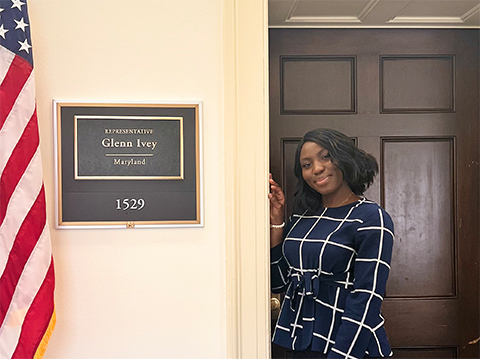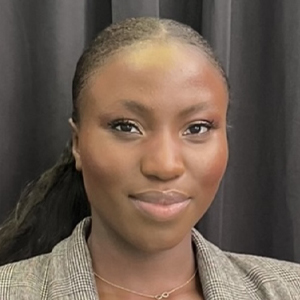
How public policy work amplifies our impact
When I started my doctoral program, I had a clear sense of how my research would contribute to the advancement of science in the medical community. However, I did not know that getting involved with public policy and advocacy efforts would broaden my impact. I hope that sharing my experience will increase awareness of how interwoven policy is into the fabric of advancing science and how we as scientists can augment the impact of our research through advocacy and outreach.

Yvette Seger is the director of strategic scientific program advancement, director of science policy, and deputy director of the Office of Public Affairs at the Federation of American Societies for Experimental Biology. She earned a Ph.D. in genetics from Stony Brook University, working at Cold Spring Harbor Laboratory, and has since been involved in science policy in the private and public sectors.
“Some scientists misconstrue advocacy as lobbying or an unnecessary distraction from research, while others might assume engaging in advocacy requires travel to Washington, D.C.,” Seger said. “In fact, a lot of advocacy happens in your home state because elected officials are ultimately accountable to those who elected them — that’s where the votes are.”
My introduction to science advocacy came through the Society of Women Engineers Capitol Hill Day in 2022. I joined a group of scientists and engineers to advocate for legislation affecting girls’ and women’s education and careers in science, technology, engineering and mathematics.
My next effort, funded by my Ph.D. adviser, was participation in the Public Policy Institute organized by the American Institute for Medical and Biomedical Engineering. This is where I met Seger. She and others shared their experiences and thoughts on the role of public policy in advancing science.
“Every scientist can advocate for increased research funding,” Seger said.

Researchers in academia know that insufficient funding can slow or stifle their progress. Public policies directly influence funding, and who better to share the news about advances in science than the researchers who have firsthand knowledge of the work they do and the funding they need?
Doubling the National Institutes of Health budget, workforce policies that support early-career researchers, and training NIH grant reviewers to reduce implicit bias are just a few of the policies that have been directly impacted by science advocacy, Seger said.
I also learned about the benefits of talking to policymakers about your work and journey as a scientist as a Society of Women Engineers congressional advocate this year. After visiting the office of Senator Chris Van Hollen, D-Md., we received correspondence that the office will cosponsor the STEM ReSTART Act, which supports underrepresented populations rejoining the STEM workforce.
If we limit our activities to the classroom and the lab, we miss opportunities to engage the public in our work and remind nonscientists of the potential of research.
“Recognize that there is more to a career in science than just doing the science,” Seger said. “You need to understand policy at the university level to be good at your job. But scientists also need to know how they are funded. You don’t have to get involved in politics, but you do have to understand that for federal funding there are rules — those rules come into play from Congress, and their opinions could affect funding.”
You can find an advocacy toolkit and information about the Advocacy Training Program, Capitol Hill Day and outreach programs at asbmb.org.
Enjoy reading ASBMB Today?
Become a member to receive the print edition four times a year and the digital edition monthly.
Learn moreGet the latest from ASBMB Today
Enter your email address, and we’ll send you a weekly email with recent articles, interviews and more.
Latest in Opinions
Opinions highlights or most popular articles

Sketching, scribbling and scicomm
Graduate student Ari Paiz describes how her love of science and art blend to make her an effective science communicator.

Embrace your neurodivergence and flourish in college
This guide offers practical advice on setting yourself up for success — learn how to leverage campus resources, work with professors and embrace your strengths.

Survival tools for a neurodivergent brain in academia
Working in academia is hard, and being neurodivergent makes it harder. Here are a few tools that may help, from a Ph.D. student with ADHD.

Hidden strengths of an autistic scientist
Navigating the world of scientific research as an autistic scientist comes with unique challenges —microaggressions, communication hurdles and the constant pressure to conform to social norms, postbaccalaureate student Taylor Stolberg writes.

Black excellence in biotech: Shaping the future of an industry
This Black History Month, we highlight the impact of DEI initiatives, trailblazing scientists and industry leaders working to create a more inclusive and scientific community. Discover how you can be part of the movement.

Attend ASBMB’s career and education fair
Attending the ASBMB career and education fair is a great way to explore new opportunities, make valuable connections and gain insights into potential career paths.

